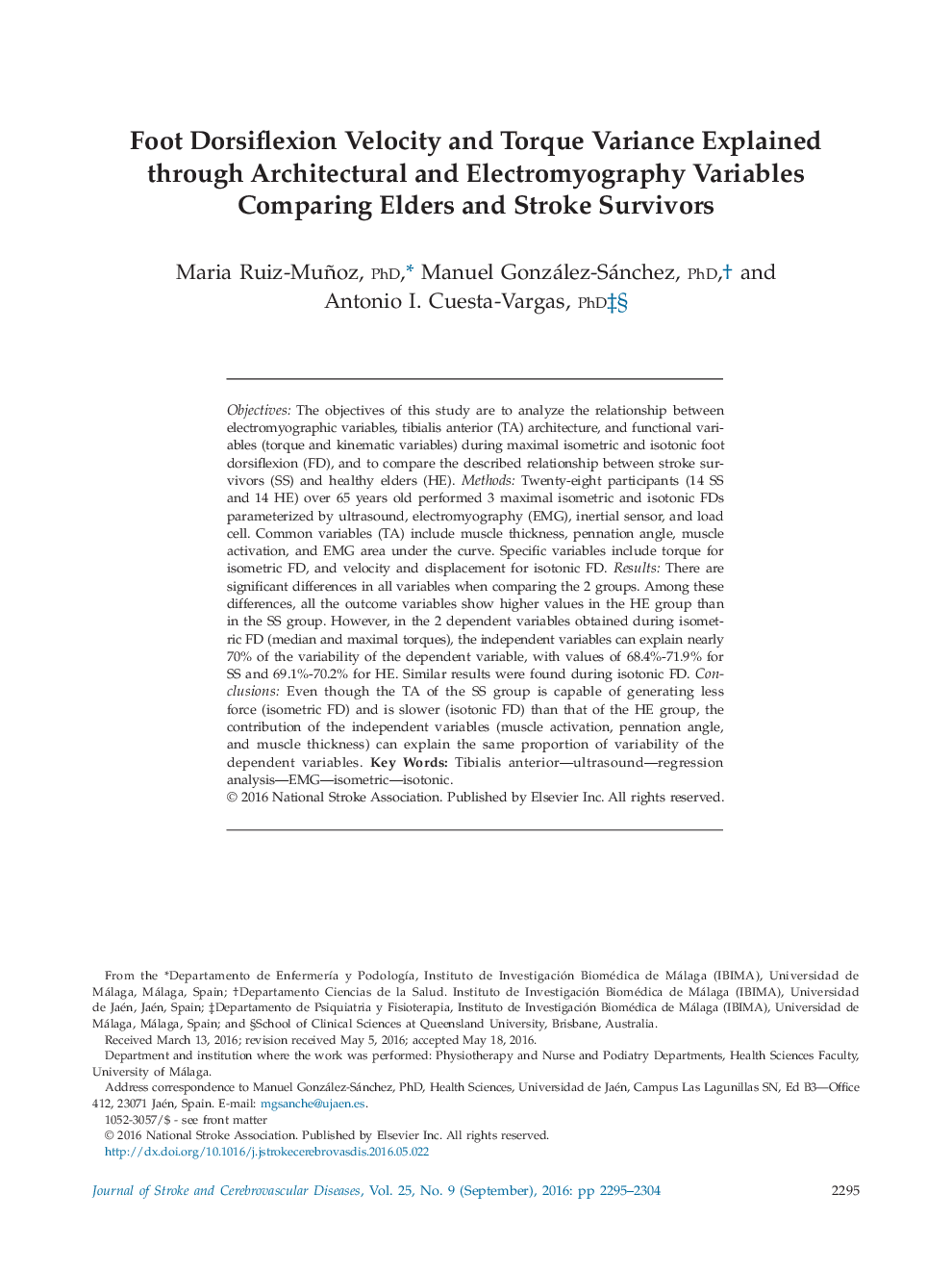| کد مقاله | کد نشریه | سال انتشار | مقاله انگلیسی | نسخه تمام متن |
|---|---|---|---|---|
| 2703686 | 1144639 | 2016 | 10 صفحه PDF | دانلود رایگان |
ObjectivesThe objectives of this study are to analyze the relationship between electromyographic variables, tibialis anterior (TA) architecture, and functional variables (torque and kinematic variables) during maximal isometric and isotonic foot dorsiflexion (FD), and to compare the described relationship between stroke survivors (SS) and healthy elders (HE).MethodsTwenty-eight participants (14 SS and 14 HE) over 65 years old performed 3 maximal isometric and isotonic FDs parameterized by ultrasound, electromyography (EMG), inertial sensor, and load cell. Common variables (TA) include muscle thickness, pennation angle, muscle activation, and EMG area under the curve. Specific variables include torque for isometric FD, and velocity and displacement for isotonic FD.ResultsThere are significant differences in all variables when comparing the 2 groups. Among these differences, all the outcome variables show higher values in the HE group than in the SS group. However, in the 2 dependent variables obtained during isometric FD (median and maximal torques), the independent variables can explain nearly 70% of the variability of the dependent variable, with values of 68.4%-71.9% for SS and 69.1%-70.2% for HE. Similar results were found during isotonic FD.ConclusionsEven though the TA of the SS group is capable of generating less force (isometric FD) and is slower (isotonic FD) than that of the HE group, the contribution of the independent variables (muscle activation, pennation angle,and muscle thickness) can explain the same proportion of variability of the dependent variables.
Journal: Journal of Stroke and Cerebrovascular Diseases - Volume 25, Issue 9, September 2016, Pages 2295–2304
